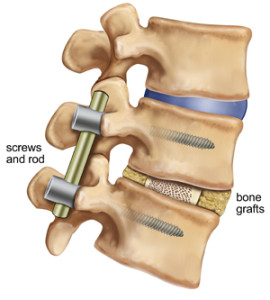How to Make Your Spinal Fusion Surgery a Success
Did you know that a spinal fusion surgery does not actually create the fusion? The surgery is performed to create the environment for the fusion to develop, and over the next 6 to 18 months your body has to create bone-growing cells to form a new bony bridge that crosses the affected spinal segment.
This makes a fusion a lot different than most surgeries, in which the surgeon has addressed the pathology by the end of the operation. In a spinal fusion, your body actually has to do a lot of the heavy lifting.
For people who want to help create the most favorable chances of having their fusion occur successfully, here is the advice I have to offer:
1. Ask about your implant. Pretty much any fusion implant on the market can work well, and there are many patients who have had success with a spine fusion using a variety of implant designs and materials. The last thing any patient wants is a repeat operation because the first fusion did not set up, so I think it is best to use an implant that encourages a fusion to occur.
2. Stop smoking. Actually, stop any type of nicotine intake, including chewing tobacco and cigar smoking. The nicotine hurts your bone-growing cells and makes it far more difficult for your body to create enough new bone cells for the fusion to form. A lot of spine surgeons actually require their patients to stop smoking before they will perform a spinal fusion.
3. Be mindful of your weight. Studies have shown that, as a group, obese patients have statistically longer surgical times and higher rates of complications after a lumbar spinal fusion surgery, so to the extent possible it’s best to try to lose extra weight prior to the surgery.
4. Try to exercise before surgery. If you know you’re going to have fusion surgery in a few weeks or months, use that time to try to get in shape as much as possible. If you are in a great deal of pain, it may be difficult to do much, but even a small amount of exercise and movement is better than none. You will find that your effort pays off after the surgery, when you are expected to walk daily as part of your rehabilitation.
5. Prepare for postoperative activity restrictions. After a spine fusion surgery, it takes approximately 3 months for the fusion to achieve its first stage of healing together. During these first 3 months, you need to be careful to avoid activities that may place the bone graft at risk. These activities usually include anything that involves lifting, twisting, or bending the lower back, or vigorous activities like running, golfing, and other sports.
6. Commit to postoperative rehabilitation. Last but not least, you will need to commit to making a serious effort in rehabilitation in order for your fusion to heal into a strong solid bone. Your bone is made of living tissue, and a good physical therapy program will stress the bone so that it can grow stronger.
Making the decision to have a spinal fusion is an important one. It is an extensive surgery with a long healing period. Making sure you do everything in your power to get the fusion to grow together well will go a long way in helping improve your chances of reducing or eliminating your pain. Before and after surgery, Dr. Sharma can help you make the right moves toward a healthy lower back.

Categories
Archives
Contact Dr. Mudit Sharma
Phone: (571) 921-4877
Toll Free: (855) 774-6334
Monday – Thursday: 8am – 4pm
Friday: 8am – 2pm
Fredericksburg
4604 Spotsylvania Parkway, Suite 300 Fredericksburg, VA 22408
Manassas
8650 Sudley Road, Suite 315
Manassas, VA 20110-4418

